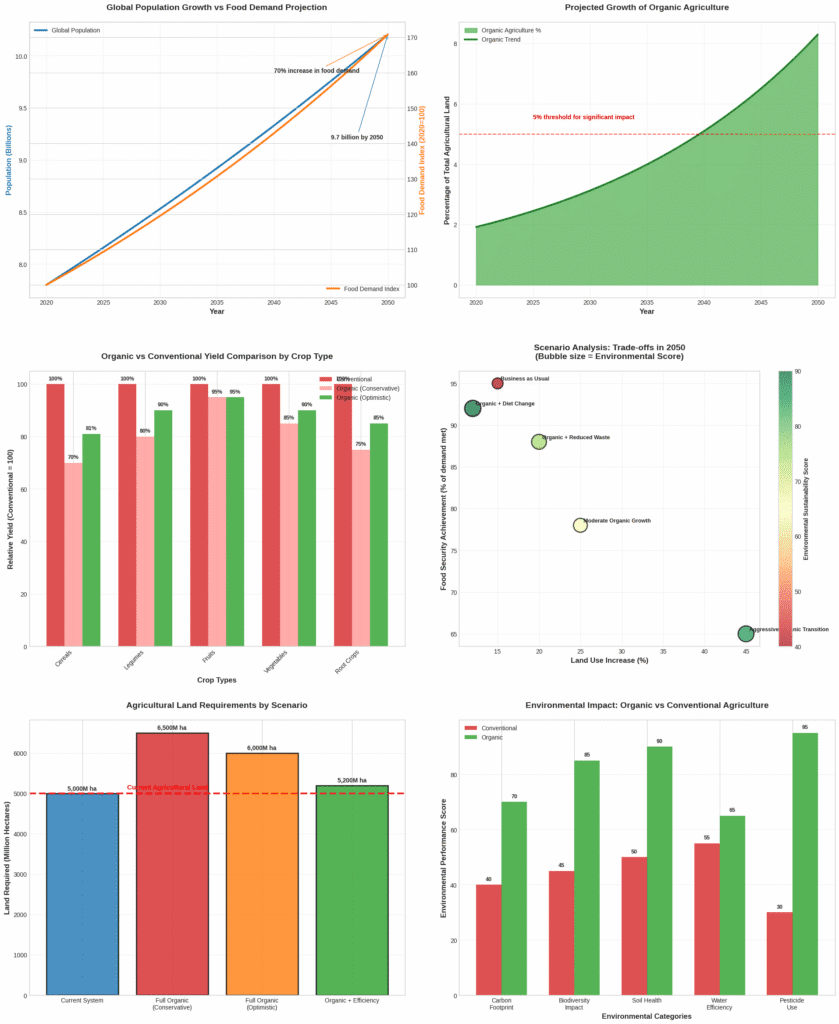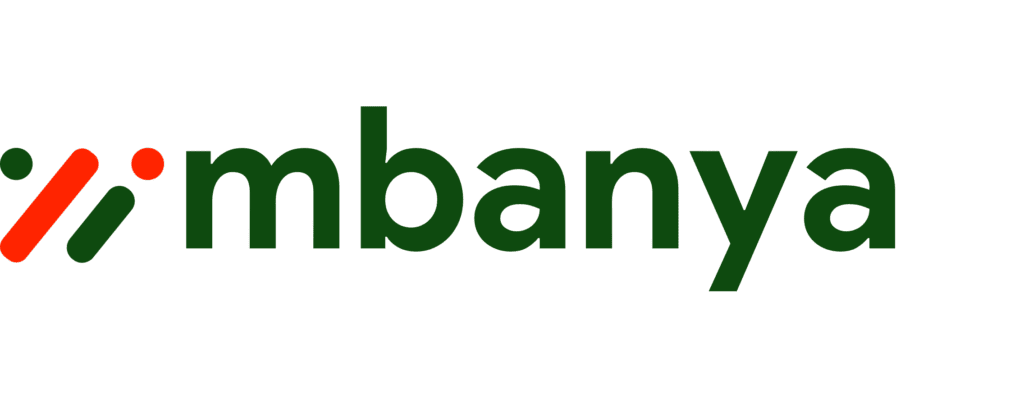The world stands at a critical crossroads. With global population projected to reach nearly 10 billion people by 2050, food production must increase by an estimated 70% to meet growing demand. Meanwhile, environmental concerns and climate change pressure agriculture to become more sustainable. This raises a fundamental question: Can organic farming methods realistically feed our expanding population while protecting the planet?
The Current State of Global Agriculture and Population Growth
Organic agriculture is currently practiced in 188 countries, covering more than 96 million hectares of agricultural land managed by at least 4.5 million farmers. However, this represents only about 1.6% of total global agricultural land, while the organic farming market is expected to reach $365.84 billion by 2029, growing at 12.3% annually. The challenge is immense. Current global food production systems already struggle with food security, affecting millions worldwide. Food security in 83 low- and middle-income countries showed improvement in 2024 due to economic growth and lower food prices, yet significant gaps remain.
Understanding the Organic Yield Gap
The most critical factor in evaluating organic farming’s feasibility is the yield gap between organic and conventional agriculture. Research consistently shows that organic farming produces lower yields per hectare than conventional methods, though the gap varies significantly by crop type and region. Yields under organic farming are on average 25% lower than conventional ones, reaching a yield gap of 30% for cereals. However, more recent analysis suggests organic yields are only 19.2% lower than conventional yields, a smaller yield gap than previous estimates. The difference depends heavily on crop type, with perennials grown on favorable soils showing organic yields just 5% lower than conventional yields. Importantly, organic agriculture has significantly lower temporal stability with 15% more yield variability compared to conventional agriculture, creating additional food security challenges.

Food Security Analysis by Scenario (2050)
Here’s a breakdown of food security ratios and production gaps for different future scenarios:
- Current System:
- Food Security Ratio: 0.68
- Production Gap: +32.4%
- Conservative Organic:
- Food Security Ratio: 0.57
- Production Gap: +42.6%
- Optimistic Organic:
- Food Security Ratio: 0.57
- Production Gap: +42.8%
- Organic Plus Efficiency:
- Food Security Ratio: 0.75
- Production Gap: +25.2%
Key Metrics Summary
This table outlines the key assumptions and data points used in the food security analysis:
| Metric | Value | Source/Assumption |
|---|---|---|
| Global Population 2050 | 9.7 billion | UN Population Division |
| Food Demand Increase | +70% | FAO projections |
| Current Organic Land % | 1.6% | Current data |
| Projected Organic Land % (2050) | 3.8% | 5% annual growth |
| Organic Yield Gap (Conservative) | 25% | Meta-analysis average |
| Organic Yield Gap (Optimistic) | 19% | Recent studies |
| Additional Land Needed (Conservative) | +30% | Yield gap compensation |
| Additional Land Needed (Optimistic) | +20% | Optimistic scenario |
The Path Forward: Realistic Scenarios for Organic Agriculture
Based on current data and projections, several scenarios emerge for organic agriculture’s role in feeding the world by 2050:
Scenario 1: Limited Organic Expansion (Most Likely)
Under current growth trends, organic agriculture might reach 4-5% of global farmland by 2050. This scenario would require conventional agriculture to shoulder most of the food production burden, with organic farming serving niche markets and environmentally sensitive areas.
Scenario 2: Aggressive Organic Transition (Challenging)
A rapid shift to organic methods would face significant hurdles. Research suggests organic agriculture could feed the world without requiring cropland expansion only if food waste and meat consumption are significantly reduced. This scenario requires massive behavioral and systemic changes.
Scenario 3: Hybrid Approach (Most Viable)
The most realistic path involves combining the best of both systems: expanding organic practices where environmentally beneficial while maintaining higher-yield conventional methods for staple crops. This approach could achieve food security while gradually improving environmental outcomes.
Environmental Benefits vs Production Challenges
Organic farming offers substantial environmental advantages, including improved soil health, enhanced biodiversity, reduced chemical inputs, and better carbon sequestration. However, these benefits come with production trade-offs that must be carefully managed in a food-insecure world. Studies show that the yield gap between organic and conventional farming narrows with time, suggesting that improved organic techniques could reduce the productivity disadvantage. However, organic agriculture’s lower temporal stability presents additional challenges for food security.
A Balanced Approach to Sustainable Food Security
The data reveals a complex reality: while organic farming alone cannot feasibly feed 10 billion people by 2050 under current productivity levels, it can play a crucial role in a sustainable food system. The key lies in strategic implementation rather than wholesale conversion. Feeding the world sustainably will require a multiprong approach combining improved organic techniques, precision conventional agriculture, significant reductions in food waste, shifts toward more efficient diets, and continued agricultural innovation. Rather than viewing organic and conventional agriculture as competing systems, the future likely lies in integrating their strengths while addressing their respective weaknesses.The goal should not be to choose between feeding people and protecting the environment, but to develop agricultural systems that can accomplish both objectives simultaneously. This balanced approach offers the most promising path toward genuine food security in an environmentally sustainable world.
This analysis is based on current research and data trends. Continued monitoring and adaptive management will be essential as new technologies and methods emerge in both organic and conventional agriculture.


Leave a Reply
You must be logged in to post a comment.